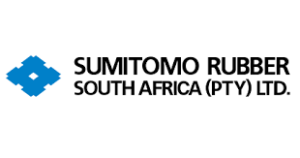
The South African Institute of Civil Engineers (SAICE), in its latest report, has deemed South African roads “at risk of failure” due to poor maintenance and lack of upkeep over decades – with drivers now bearing the burden of the ailing network.
With growing concern over the state of road, and related infrastructure, the onus lies on drivers to protect themselves and their vehicles while out on the roads says Sumitomo Rubber South Africa (SRSA), a proudly local manufacturer of tyres, including the iconic Dunlop Tyres brand.
Poor state of roads
The SAICE 2022 Infrastructure Report Card for South Africa stated that South Africa’s road network is approximately 750 000 km long, making it, an estimated tenth longest in the world. Of this, about 160 000 km is paved, with SANRAL managing 21 403 km of the paved network and the balance shared between provinces and municipalities.
The majority of roads, whether managed by SANRAL on behalf of the Department of Tourism, provincial departments or by local municipalities, teeters dangerously towards the lower end of the rating scale from A (world class infrastructure) to E (unfit for purpose).
SRSA notes with concern the recent report which states: “the secondary and tertiary road network [excluding national roads] is experiencing accelerated rates of deterioration, compromising both road safety and the efficiency of moving freight” and “the condition of most paved provincial roads is substandard. There is a risk of further deterioration due to increased vehicle overloading, poor maintenance and the steady reduction of skilled personnel in roads departments”.
The report further noted that: “Most provincial and local road authorities do not regularly undertake or publish assessments of the condition of their road networks, and repairs are therefore typically reactive, e.g. fixing potholes rather than conducting regular preventative maintenance.”
CEO, Sumitomo Rubber SA, Lubin Ozoux, said: “SRSA works within the context of road safety. Whether we speak about the benefits of fitting wipers, checking headlights, or fitting the best quality tyre, it all points to road safety and making sure we get ourselves as drivers, and our families, from point A to point B safely. However, the issue of poor road infrastructure and lack of proactive maintenance hits close to home at SRSA because our product has direct contact with the infrastructure.”
Driver safety
SRSA urges drivers to take note of the critical report and take heed on the road.
“Once out on the road, there are any number of infrastructure-related challenges drivers could face such as potholes, washed up debris, or poor road surfaces. These are beyond our control and that of the driver. At the same time, drivers must be on the alert for changing weather conditions, animal crossings and the behaviour of other drivers on the roads,” said Ozoux.
What is within control, is that of quality tyres.
“When a customer purchases our tyre, we literally have their lives in our hands. People trust us when they choose to invest in our tyres because they are assured of a quality product that’s been safety-checked several times and is designed using the latest research and innovation in the field. If there is one thing that’s within your control, it’s purchasing the right tyre for your vehicle and intended application.
How to tread safely on South African roads
Tyre safety goes beyond having a good tyre in place. Taking into account the poor road infrastructure, drivers should seek the best advice before purchasing a tyre to use on South African roads.
- A vehicle owner needs to look at the size, compatibility, and fit which all have a direct impact on how safe the tyres on your car are.
- Tyres must be fitted onto a specific rim width to keep safe on the road, and this information is moulded onto the sidewall of the tyre with other details such as load index, speed index and maximum pressure for that particular tyre.
- Always buy brand new tyres, as tread depth on second-hand tyres can be dangerously low, resulting in aquaplaning on wet roads.
- In South Africa, it is illegal to drive with tyres that have less than 1.0 mm remaining tread, in the absence of tread wear indicators.
- Regularly check tyre pressure as tyre pressures naturally decrease as air slowly bleeds through the tyre’s inner liner, meaning regular checks are a necessity.
- Also regularly inspect your tyre’s tread surface to check if any screws, metal shards or fractured glass may have penetrated.
Use Dunlop Sure to help combat tyre damage
“Dunlop Tyres South Africa stands by its product and works toward the safety of drivers on the roads. This is why we created the Dunlop Sure tyre guarantee. We are the only South African tyre manufacturer that offers tyre insurance. We want to give South Africans that Mzansi confidence while out on the roads,” said Ozoux.
Dunlop Sure Tyre Insurance is available exclusively from Dunlop Branded retail outlets – Dunlop Zone, Dunlop Express, Dunlop Commercial and Dunlop Container stores in South Africa, Botswana, Namibia, Lesotho and Swaziland. It’s available at no extra charge for 12 months and provides full replacement for irreparable damage caused by all road hazards within the first year of purchase of ALL Dunlop tyres including passenger, SUV/4×4 and light truck tyres.
